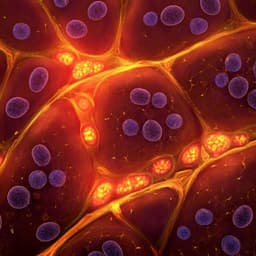
Medicine and Health
Neuroprotective role for RORA in Parkinson’s disease revealed by analysis of post-mortem brain and a dopaminergic cell line
F. S. Al-zaid, M. J. Hurley, et al.
This intriguing study conducted by Felwah S. Al-Zaid, Michael J. Hurley, David T. Dexter, and Glenda E. Gillies reveals a sex-specific expression of RORA in Parkinson's disease, highlighting a potential therapeutic target. Discover how higher levels of RORA in females could lead to groundbreaking neuroprotective strategies against PD.
~3 min • Beginner • English
Related Publications
Explore these studies to deepen your understanding of the subject.







